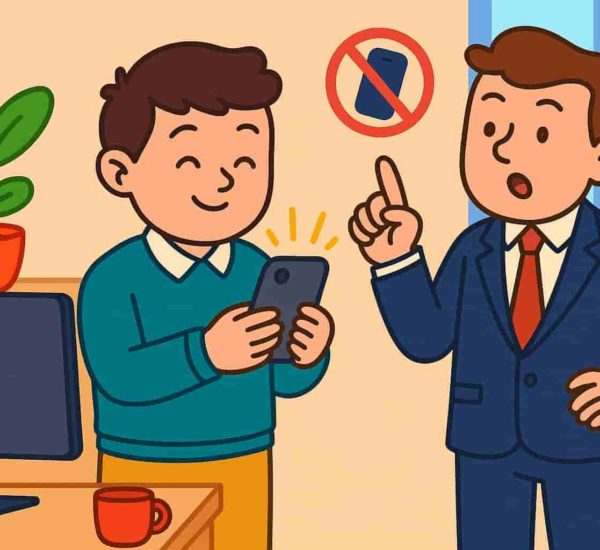Workplace conflicts often horn into great work environments due to differences in opinions, conversations turning into heated arguments, and in some cases, even deep-rooted biases. Increasingly aggressive workplace conflicts can even cause a massive upheaval in both the personal and professional lives of employees.
Although every individual is entitled to an opinion and a unique viewpoint, working together as a team may require compromising in many situations. In case disagreements go out of hand, managers must find ways to resolve conflicts within their team. These can begin with one-to-one meetings and even reach HR mediation. In this blog, we’ll take you through conflict management, conflict resolution strategies, and workplace conflict examples.
What is Conflict Resolution?
Conflict resolution is a process to resolve a dispute or conflict between two or more parties and come to an agreeable conclusion for all parties involved.
The whole conflict management process and resolution go beyond suppressing the source but unearthing the root cause instead. Since conflicts are inevitable, and the only way to resolve the conflicts is to address the issue and strategically find a solution. Ignoring conflicts can impact productivity and create rifts and communication issues among employees.
Conflict resolution in the workplace often requires mediation, negotiation, and outstanding leadership skills on the part of HR and management.
Office conflict resolution is crucial for maintaining the peace and productivity of an organization. Although constructive conflict is good for progress, growth innovation, and even fueling better decision-making; some conflicts can breed contempt and create a toxic work environment.
Managers and superiors within an organization must implement strategies to mitigate conflicts through:
- Understanding the root cause of the conflict and devise a plan accordingly to negotiate and foster cordial relations. This may include negotiation between two or more parties in the conflict and inclusion while respecting everyone’s perspective. It takes a lot of understanding to understand the crux of conflict resolution.
- Getting an insight into the various ideas, the background of the problem, and understanding the perspective of all parties play a pivotal role in resolving conflict at work. Respecting the difference and coming to an equitable midground often help with conflict resolution.
- Every person involved in a conflict or dispute must be given an equal opportunity or a fair chance to communicate their point of view. Senior management and HR must be open to discussing all issues before coming to any conclusions.
How to Resolve Conflict in the Workplace?
Workplaces witness different types of conflicts, and constructively handling the conflicts is the only way forward. These are the primary conflict resolution steps that help in identifying, resolving, and handling conflicts in a workplace:
Identification of the Conflicts
Sometimes the existence of the conflicts is obvious and pretty much evident. But other times it is hidden and requires an experienced eye to recognize the signs and clues of conflicts and their negative impact on the organization.
The first step to resolving conflicts is knowing that conflicts exist. Here are some signs, although not exhaustive a list, of conflicts:
- Low productivity, lack of engagement, and lower participation during meetings is a sign that should not be ignored. Most employees lose motivation and zeal to participate when their voices are not heard actively and their opinions are disregarded.
- Employees giving each other the cold shoulder or acting indifferent towards their seniors or peers are often subtle signs of conflict.
- Passing snide remarks or sarcastic comments with intent to insult or put someone down can brew conflicts.
- The drop in productivity of high-performing employees is often an indication of an existing conflict. Constant disagreements and arguments easily burn people out and reduce their motivation to work.
- An increase in stress levels and calling in sick often can also be due to constant workplace conflicts.

Mutual Agreement to Resolve the Issue
What is conflict? We know by now that it is a situation where there is a lack of mutual agreement between two or more parties. In workplaces, for example, when there is a conflict between team members working on a project together, it reduces productivity and increases frustration. The first step after the identification of a conflict is to clarify the disagreement. This requires the conflicted parties to discuss the issue, clarify things, and agree mutually on things.
Understanding Perspective and Views to Reach a Common Ground
However, getting both parties to agree mutually can often be painstakingly challenging. To understand the core of the conflict, it is crucial to listen attentively to both parties and understand their perspectives. This approach requires both sides to agree on certain things that are best for the organization’s productivity. However, both parties must get a fair chance to express their opinion for a better understanding of the issue at hand.
Recognition of Conflict Triggers and Barriers
At times, it is not the disagreement or different opinions but behavioral or attitude issues that give rise to conflicts. There are workplace conflict examples fueled by the lackadaisical and negative attitude shown by a colleague or team member. Conflicts can also arise when seniors insult or show unappreciative behavior towards their juniors. It is crucial to address the triggers that lead to conflicts and prevent their occurrence.
Mediation by Senior Management or a Representative from HR
Resolving conflicts often requires mediation by seniors or representatives from the HR department. At times, if the conflicts require legal intervention, it can also entail third-party mediation. The senior management and HR have policies and strategies in place on how to manage conflict in the workplace. Such mediation gives both parties involved in a conflict a fair chance to put their point across and come to a common ground for agreement.
Reaching a Compromise and Agreement
This is often one of the most challenging and difficult steps, but a requisite for resolving disputes and conflict. Both parties conclude and agree on certain terms and conditions for the final resolution. In this, both sides take responsibility for the conflict and agree to the common solution to make it a win-win situation. This step can take the longest time as it requires careful negotiation between all parties.
Taking Disciplinary Action on Employees Refusing to Resolve Conflicts
After a compromise has been reached, each party has to commit to their responsibility to abide by the resolution provided. Following the agreement of the plan and agreement, if one of the employees refuses to abide by it and creates conflicts, the organisation has the right to take disciplinary action against the employee as it sees fit.

Conflict Resolution Best Practices for Better Workplace Culture
An organization must use effective conflict resolution approaches for creating a positive and nurturing working environment. Conflicts increase stress and can create a tense atmosphere for employees not even involved in the actual conflict. This reduces productivity and can lead to a drop in employee engagement. Addressing the conflict in the workplace requires clarity, a well-trained supervisor, and strategies aimed at better conflict management are a few kickass conflict resolution strategies.
Want to know how should one resolve conflict using conflict resolution strategies? Here are the best practices of conflict resolution for an organization. These will help resolve disputes and conflicts to create a professional, balanced, and positive atmosphere.
Set Ground Rules and Acceptable Behaviour
No matter how well put and sorted the strategies are, conflicts are not easy to resolve unless ground rules are set for the process. The whole point of conflict resolution is to make peace and draw a common decision. The conflicts can arise due to many reasons, like budgets, resources, differences in goal insights, organizational changes, and many other issues. The conflicts can be between team members, or between two departments, or even between associates and their seniors. Ground rules of unbiasedness, confidentiality and a neutral point of view are integral to define conflict resolution.
While trying to resolve a conflict, heated arguments and differences are common. It is crucial to find a private and safe place to talk to keep the arguments limited to the conflicted parties and mediators. A standard of acceptable behavior can help in establishing the right practices across the company. Setting the basic guidelines for discussion, and zero tolerance for abrasive or abusive language is critical to prevent further friction between the conflicted parties.
Utilize the Right Conflict Resolution Skills
The right skills are necessary for the resolution of conflicts and making people involved in the conflict feel comfortable. The dissolution requires conflict resolution training and skills to understand both sides of the story. A supervisor or HR representative must have the assertiveness to resolve conflicts and find a peaceful way to compromise.
Active listening and the ability to understand the perspective of both sides are integral for building trust and respecting individual personalities. Empathy is a crucial conflict resolution skill, especially for mediators; this helps in understanding both situations without taking any sides. Active listening makes you attentive, helps observe non-verbal cues through body language, and helps understand why the person’s motives. A brainstorming session facilitated by the mediators can help in understanding the trigger points and getting to a solution quickly.
Take time to Investigate the Situation
After listing all the reasons and points of view leading to the conflict, it is time to analyze the situation. At times, things look different on the surface, and digging deeper shows a different picture. As part of resolution strategies, mediators must take ample time to investigate and know the circumstances that lead to the conflict. Do not come to a verdict immediately basis a cursory observation.
There can be hidden conflict sources not revealed due to undue pressure or other reasons. Investigation of a conflict, especially from a legal standpoint, can help in answering all questions in depth.
Meet Common Goal through Accommodation and Collaboration
The main aim of conflict resolution is to agree on a common solution and ensuring no further conflict arises for the same reasons. While reaching a common goal, the good of the organization must always be kept in mind. There are many conflict management examples where one party has to accept the demands of the other as it is in the financial interests of the company.
However, the accommodation must not be too much or else it will lead to unavoidable disputes even in the future. With collaboration, it is easy to reach a solution or resolution as everyone is allowed to contribute and hence creates a shared space for finding a solution for the issue. At times, to agree to a solution means compromising aggressively.
Evaluation of the Situation to Prevent Future Conflicts
Finding a solution to a current conflict is not enough unless proper conflict management and resolution systems are in place. Create models of communication and a strategic process to help prevent conflicts. Before a conflict becomes an issue and goes beyond control, it is important to take all necessary measures. Perform a risk assessment, have a conflict resolution policy in place, and encourage employees to try informally discussing their issues to deal with them before they require mediation.
Depending on the nature and intensity of the conflict, a mediator or arbitrator is required for resolving the issues. The mediator helps reach a conclusion, keeping in mind the participants’ opinion in a conflict. In the case of arbitration, it is a third party who listens to the conflicts without any bias and helps in reaching a decision. The right conflict strategies and policies help in preventing conflicts in the future.
Conflicts in the workplace can stem from many reasons. However, miscommunication can often be one reason as it misinterprets others’ intentions and creates misunderstandings.
An open-door policy and strategic approaches help in understanding how to resolve conflict at work. A manager must possess conflict resolution skills to minimize friction at the workplace.
Conflict is a day-to-day thing, and healthy, constructive conflict is a good way of learning things and making better decisions. However, negative conflicts create tension and reduce productivity, impacting the overall organizational performance. Hence, conflict management and resolution are an integral part of every company.



